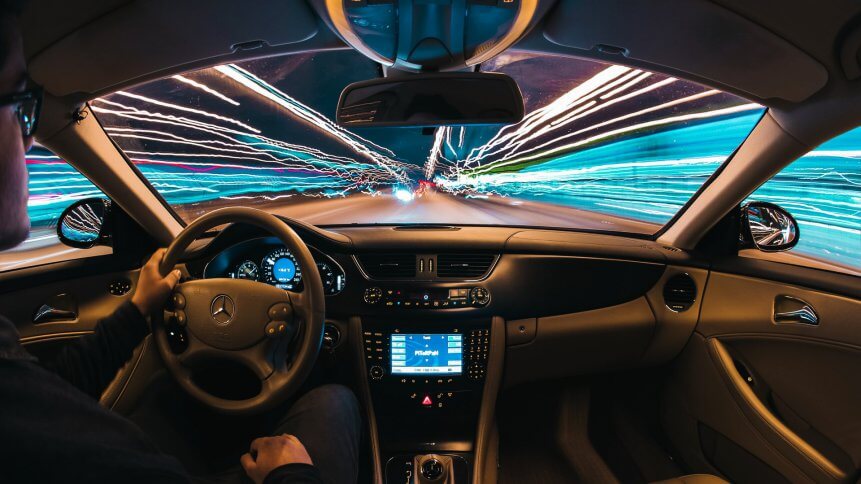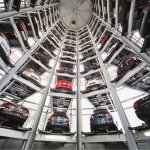AR HUDs — the next upgrade for connected vehicles?

- The global HUD market was valued at US$930 million in 2019 and has been expected to rise to almost US$2.5 billion by 2026
- From hazard avoidance to location-based updates, AR technology can enhance the driving experience in more ways than most
Personal transportation is transforming rapidly. Not only will cars be able to drive themselves — possibly within the next decade — carmakers are innovating new ways for drivers and passengers to interact with their vehicles.
Augmented reality (AR) is a developing area, attracting growing interest in its ability to “tear down the barrier” between our day-to-day physical surroundings and the internet by overlaying digital objects onto the world around us.
Combined with existing holographic head-up (HUD) technology, our cars of tomorrow could feature this functionality, overlaying directions onto the road in front of us or indicating if we’re driving too close to a vehicle with a color-coded strip.
Since originally gaining popularity in the aviation and military sectors, HUD technology has increasingly shifted towards the automotive sphere.
While the technology is fairly basic, automakers have continued to embrace HUD displays to provide key information, such as speed and direction. As the auto industry strives to make cars safer for drivers, passengers, pedestrians, cyclists, and animals, it will only be a matter of time before augmented reality AR-enabled HUD technology is seen as an irreplaceable part of vehicle operation.
The global HUD market was valued at US$930 million in 2019 and has been expected to rise to almost US$2.5 billion by 2026.
And as more people become aware of how beneficial holographic displays can be with navigation and safety warnings projected into the driver’s field of vision, more manufacturers are expected to adopt technology as installation costs fall.
Enhanced experience
From hazard avoidance to location updates, AR technology can enhance the driving experience, adding speed and efficiency in the delivery of important information in real-time, adapting to the changing environment.
AR-enabled HUDs now have the ability to overlay graphics that can interact with actual objects while utilizing vehicle sensor data when driving, making it no longer reliant on driver assistance systems that consist of audible alerts and flashing symbols to highlight any potential hazards. Alternatively, navigation can be made seamless with an animated arrow being displayed at the precise point where a turn needs to be made.
Ready for the next level of displays? The augmented reality head-up display (AR-HUD) of the new #SClass provides loads of #augmentedreality content for #drivingassistance systems and navigation information. #MercedesBenz #MBUX pic.twitter.com/LwGqGJvRjB
— Daimler AG (@Daimler) July 10, 2020
As compared to looking at a satnav on the dashboard, these systems can ensure eyes stay on the road, while AR cueing can make a crucial difference in helping to highlight hazards like an unexpected pedestrian in the car’s path.
These systems can include multi-modality, ensuring drivers have multiple ways to interact with the HUD. A practical example of this is the use of voice recognition, which provides the ability to control satnav, entertainment, and present vehicle information at any time.
Any information displayed in the driver’s line of sight is considered safer than looking at a dashboard, so it’s vital that AR-enabled HUDs are designed with responsible principles in mind.

AR HUD could provide real-time information and signal hazards to the driver. Source: Shutterstock
Managing a driver’s cognitive load is imperative when driving as they’re constantly trying to stay aware of hazards and speed limits. Bombarding users with too much information can overwhelm drivers and be detrimental to decision making and reaction times.
“Augmented reality is — hands-down — the most exciting new advance in HUD innovation,” IHS analyst Mark Boyadjis told Photonics Media. “The biggest opportunity for augmented reality systems is for safety, but imagine a HUD enabling a virtual arrow to be laid upon the road itself as you drive, helping you to navigate more naturally. Other options could be illumination of the road lines or pedestrians at night or in poor visibility conditions.”
Mainstream traction
Today, there are several companies working to bring AR HUDs to millions of cars around the world.
UK-based startup Envisics recently raised US$50 million in a Series B round of funding, while Swiss startup WayRay — which raised US$80 million in 2018 — is working on similar holographic technology for vehicles.
Automotive giant Mercedes-Benz recently announced it would be the first automaker to feature AR HUD technology in a production vehicle with the 2021 S-Class, signaling the beginnings of the possible mass deployment of AR-enabled HUDs.










